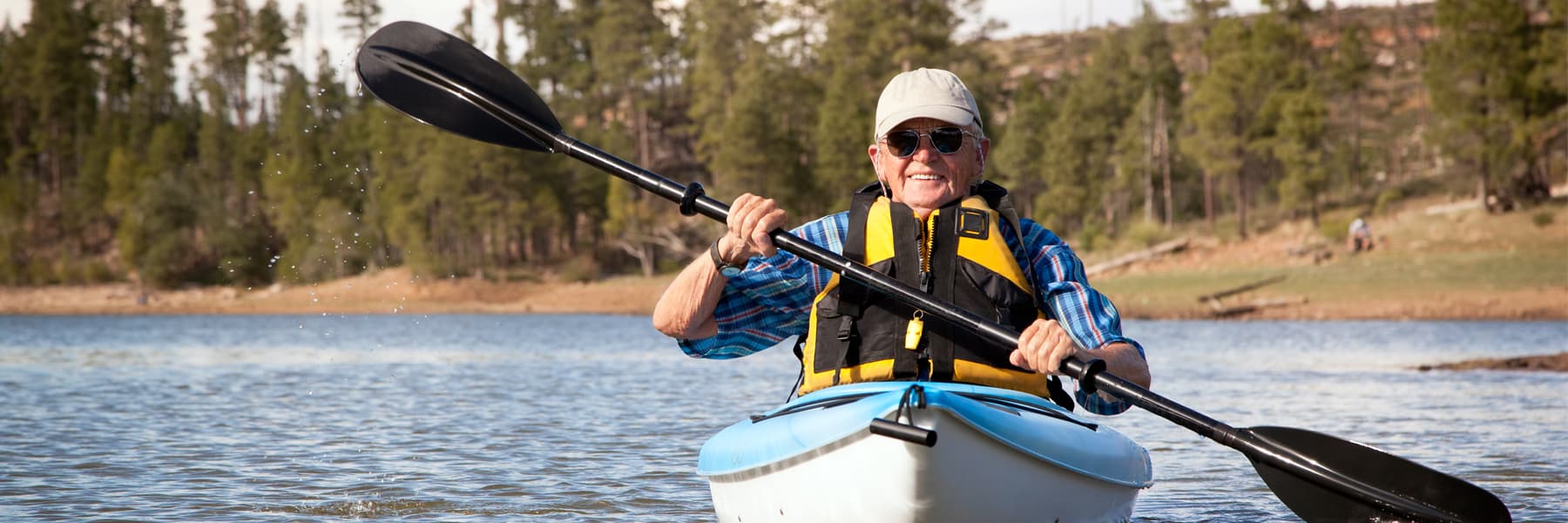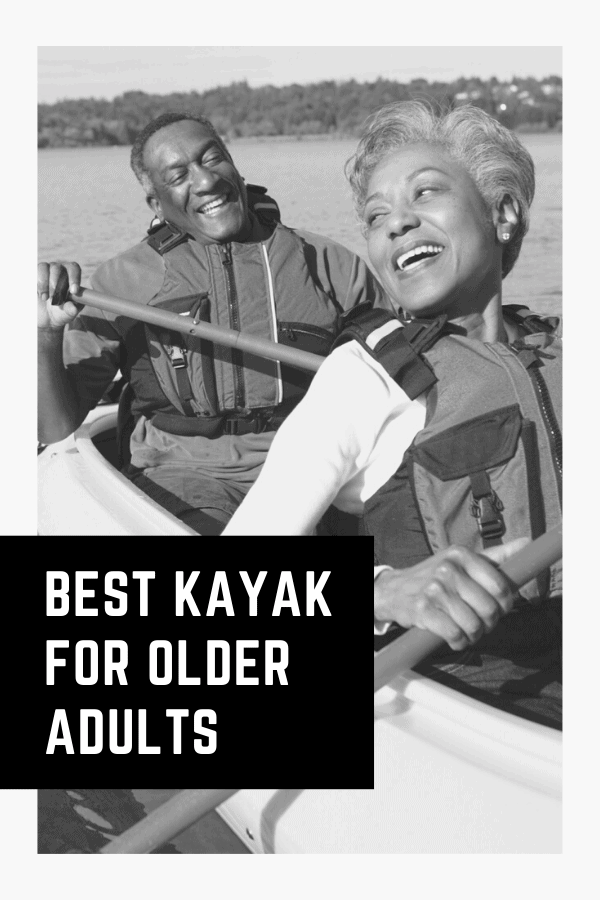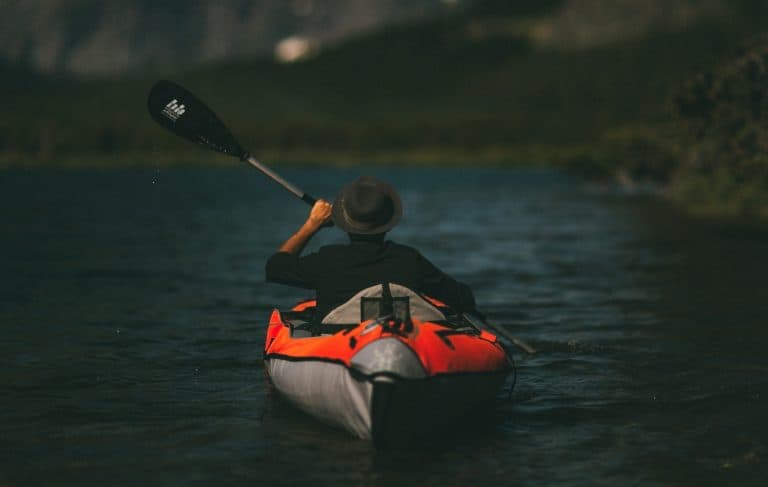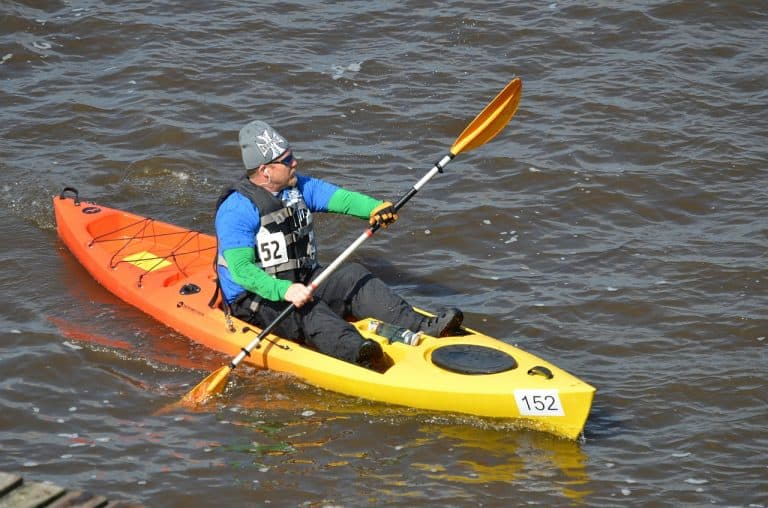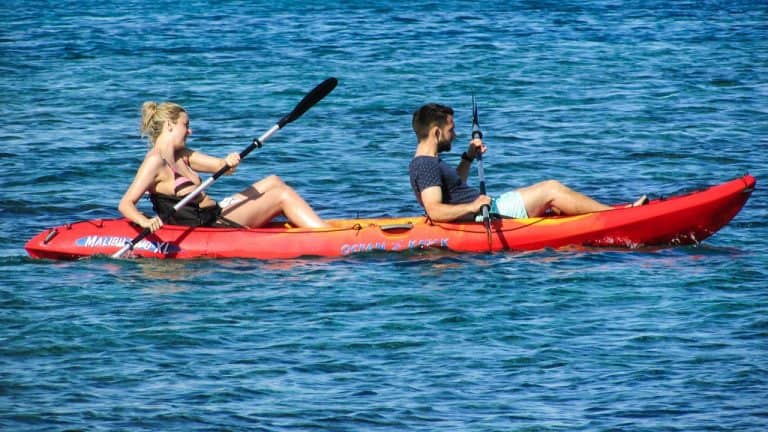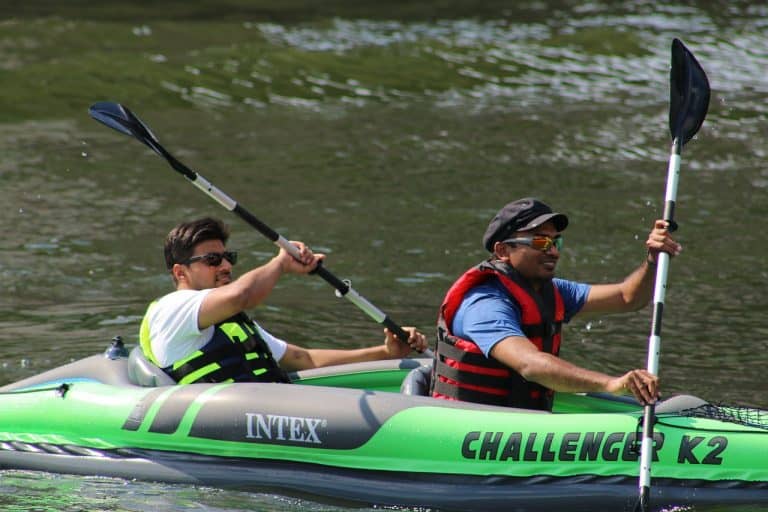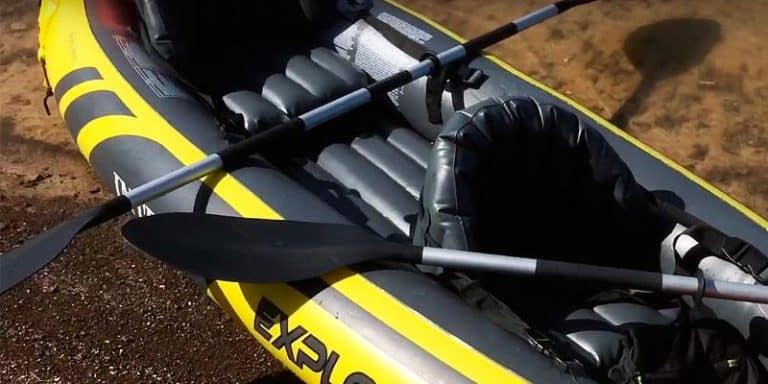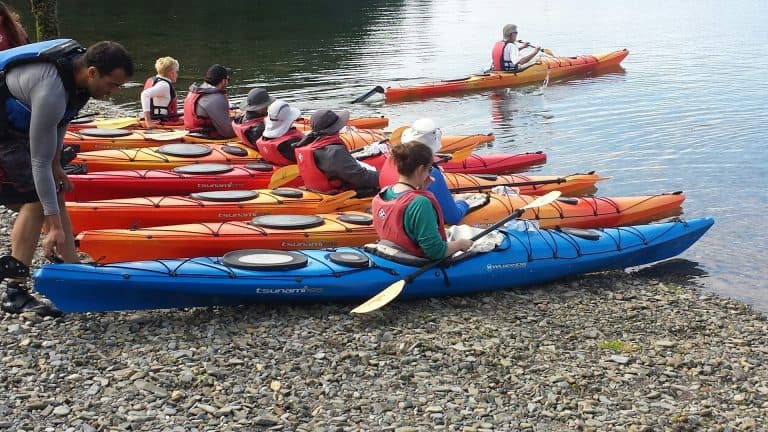Age is just a number when it comes to enjoying the serene beauty of kayaking.
For older adults, the right kayak can transform a challenging activity into a delightful adventure on the water.
In this guide, I’ll explore the best kayaks designed with senior paddlers in mind, proving that you’re never too old to embrace the joys of gliding across gentle waters.
I’ve focused on the features that matter most – stability, comfort, ease of entry and exit, and manoeuvrability – all crucial factors for older paddlers.
From sit-on-top models that offer effortless boarding to lightweight options that won’t strain your muscles, you’ll find everything on the list.
Take a look.








Related: Do You Need Scupper Plugs On A Kayak?
Best Lightweight Kayaks For Seniors
1. Oru Foldable Kayak Beach Lt
The best feature of the Oru Beach Lt kayak is that it’s foldable! It stores in a super-compact carry bag and you won’t have to worry about inflating or deflating it on either end of your paddle trip.
It’s perfect for casual kayakers, whether you like to paddle on lakes, slow-moving rivers, or calm saltwater bays. Following the instructions, you should be able to set it up in less than five minutes.
Oru Kayaks are constructed from durable polypropylene and they utilize rust-resistant hardware. When not in use, this kayak folds up to the size of a large suitcase and easily fits into the trunk of your vehicle.
The Oru Kayak Beach Lt is 12 feet long and 28 inches wide. It boasts a maximum weight capacity of 200 pounds and weighs a minimal 26 pounds when carrying it over dry land.
2. Intex Explorer K2
On the hull of this kayak, you’ll find a removable skeg that increases the kayak’s ability to track straight. This skeg will help you navigate in higher winds and if paddling against currents.
Because it’s primarily made for use on smaller bodies of water, this kayak comes with a bright yellow bow and gunwales. This increases your visibility to other boaters on the water.
The Explorer K2 has adjustable, removable seats with comfortable backrests. Because the seats are removable, this kayak can also be set up to accommodate a single paddler.
3. Brooklyn Kayak Company FK285
The FK285 made by Brooklyn Kayak Company is a rigid, one-person kayak with an open cockpit design. It measures nine feet, five inches long and 33 inches across.
Because it’s also designed with a number of features for kayak fishing, this vessel is extremely stable. Those additional features make this kayak a little heavier, as it weighs in at 44 pounds.
The seat on this kayak is slightly raised for added comfort and adjustable to each paddler’s unique body type. The elevated seat allows the paddler’s hips to sit slightly higher above their legs and helps to combat hip tightness.
The BKC FK285 comes with a total of three fishing rod holders if you’re interested in kayak fishing. It also boasts two waterproof hatches that are great locations for storing valuable and other dry items.
4. Perception Rambler 13.5
The Perception Rambler 13.5 is an excellent choice for the kayaking couple. It’s a 13.5 foot tandem kayak with two comfortable seats and an optional third seat in the middle that’s great for grandkids or a furry companion.
It’s an adaptable kayak that performs well on lakes, slow-moving rivers, calm ocean bays, and even in light surf. It also has a large storage area in the stern that’s great for a cooler or other large gear.
Comparing it to the other kayaks on this list, it is a little on the heavier side. At 78 pounds, you’ll most likely want to look into a universal kayak carrier to help you transport this kayak to and from the water’s edge.
The Rambler 13.5 has a maximum weight capacity of 550 pounds and measures 34 inches across. It also features multiple footrest positions designed to accommodate paddlers of many different heights.
5. Vibe Kayaks Yellowfin 100
The Yellowfin 100 from Vibe Kayaks is a super maneuverable, one-person kayak that comes with its own lightweight paddle. It measures ten feet in length and 32 inches across.
The Yellowfin’s open cockpit design makes it easy to get into and out of this kayak. It also allows the paddler to make micro-adjustments to your position once inside, which is essential for comfort.
Two waterproof storage hatches in the center and bow of this kayak give you a place to store your valuables. There’s also a large, open storage area in the stern that is secure using bungee rigging.
The Yellowfin has a maximum weight capacity of 375 pounds and the kayak itself weighs 57 pounds. It’s best suited to lakes, ponds, rivers, and streams, although it will perform fairly in open water and light surf as well.
6. Pakayak Bluefin 14
The Pakayak Bluefin 14 is an intriguing option for older adults that are passionate about sea kayaking. Rare amongst sea kayaks, the Bluefin is actually composed of multiple parts that break down and store in a large carry bag when you’re done paddling.
Made from high-density, UV-resistant polyethylene, this kayak utilizes aerospace product designs to create a leak-proof, rigid vessel. When you’re done paddling, it breaks down into six separate pieces.
Assembly is actually easier than you might imagine. Once you’re familiar with the instructions, this kayak takes about three minutes to assemble and there are no small parts that are easy to lose.
The Bluefin is 14 feet long and 24 inches across. The cockpit fits standard extra-large spray skirts and the kayak’s double chined hull makes it easier to track, carve, and control.
7. Advanced Elements AdvancedFrame Ultralite
The Advanced Elements AdvancedFrame Ultralite kayak is an inflatable, one-person kayak that weighs a minimal 17 pounds. For the kayaker that really wants to go ultralight, this inflatable is a great choice.
But the minimal weight isn’t the only great feature of this kayak. It also features built-in aluminum ribs that provide greater definition to the bow and stern areas of the kayak.
The major benefit of this design element is improved tracking, which means your kayak will actually travel in the direction you want it to go. It also features three layers of material that contribute to its ability to withstand bumps and resist punctures.
The AdvancedFrame Ultralite kayak achieves the same level of performance as many rigid kayaks, which is rare amongst inflatables. It also deflates into compact dimensions to easily fit in the back of your vehicle without the need for a roof rack.
8. Outdoor Tuff Stinger
The Outdoor Tuff Stinger is another ultralight, ultra-portable single person kayak. This kayak’s inflatable design keeps its total weight down to just 25 pounds and allows it to easily deflate into a compact storage backpack in minutes.
It comes with two fins on the hull that improve maneuverability and performance over distance. It also has two large, covered storage areas in the bow and stern for your gear.
The interior construction of this inflatable kayak boasts three distinct air chambers. It utilizes puncture-resistant, triple-layer PVC to create additional stiffness and resilience against elements.
The Stinger measures just over nine feet in length and 30.25 inches across. It also comes with an 87-inch rotatable paddle, high-pressure foot pump for quick inflation, and comfortable inflatable seat.
9. Ocean Kayak Frenzy
The Ocean Kayak Frenzy is a rigid, one-person kayak that’s nine feet long and weighs 43 pounds. This kayak is easy to control on calm, flat water, but can also perform well in light surf or when battling ocean currents.
Although this kayak doesn’t offer any watertight storage hatches, you will find two large, bungee-secured storage areas in the bow and stern. This makes getting a quality dry bag essential if you select this kayak.
Designed with an adjustable seat and multiple footrest positions, this kayak can accommodate paddlers of many heights and body types. It also features a central beverage holder to help you stay hydrated on the water.
The Frenzy has a maximum weight capacity of 325 pounds and is designed with a long center keel that helps you track straighter. It also comes with a total of four carry handles to help with easy transportation on land.
10. Sevylor Quikpak K1
The Sevylor Quikpak K1 is an inflatable, one-person kayak made from 21-gauge PVC. You’ll be able to inflate this kayak and set it up in five minutes or less once you’re familiar with its operation.
When you’re done with your paddle and you’ve deflated it, the K1 stores in an easy-to-carry backpack. That backpack actually turns into the kayak’s seat when you’re out on the water.
Multiple air chambers are utilized in the interior of this kayak’s construction. This design allows the kayak to retain more air if one chamber is compromised, which is helpful for you to get back to shore to perform repairs.
The Quikpak K1 has multiple footrest positions, which is rare amongst inflatable kayaks. It measures eight feet, seven inches in length and offers a maximum weight capacity of 400 pounds.
My Pick – Advanced Elements AdvancedFrame Ultralite
It has to be the AdvancedFrame Ultralite kayak from Advanced Elements.
I evaluated it on mainly on two things – weight and performance.
It’s hard to argue against a kayak that weighs only 17 pounds. It’s pretty much guaranteed that you won’t find yourself frustrated just getting to the water with this kayak.
But the Ultralite is also one of the highest-performing inflatable kayaks on the market. It uses aluminum ribs to provide extra rigidity and mimic the performance of comparable hard-sided kayaks.
In short, you won’t find the bow of your kayak swinging dramatically from left to right as you paddle the Ultralite. Unfortunately, this is common with many other inflatable kayak models.
I also love the Ultralite because it offers a super comfortable cockpit.
If you want an inflatable kayak that offers a dry ride, the high sides on this kayak are just what you’re looking for.

